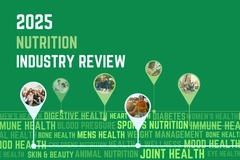
- Industry news
Industry news
- Category news
- Reports
- Key trends
- Multimedia
Multimedia
- Journal
- Events
- Suppliers
Suppliers
- Home
- Industry news
Industry news
- Category news
- Reports
- Key trends
- Multimedia
Multimedia
- Events
- Suppliers
Suppliers
UK Consumers Would be Open to Even Lower Fat Milk – FSA

1% fat milk, now on sale in most supermarkets, is almost half the fat of semi-skimmed. Most people who drink semi like the taste of 1% fat milk just as much and it has the important nutritional benefits of other milk.
18 Jan 2010 --- A new survey published by the UK Food Standards Agency, to coincide with the launch of phase 2 of the saturated fat campaign, found that people who regularly use semi-skimmed milk would be happy to switch to drinking an even lower fat milk.
1% fat milk, now on sale in most supermarkets, is almost half the fat of semi-skimmed. Most people who drink semi like the taste of 1% fat milk just as much and it has the important nutritional benefits of other milk.
Dr Clair Baynton, Head of Nutrition at the FSA, said: 'In the 1970s full fat milk was very much the norm but since then we have seen a decisive shift to semi-skimmed, which now outsells full fat by quite a margin.
'Our research shows that people are prepared to consider switching to 1% fat milk and those who regularly use semi-skimmed like the taste as much. We tend to use milk on a daily basis so this small step will make a big contribution to reducing our saturated fat.
'1% fat milk still gives us the important nutritional benefits, including calcium, protein, minerals and vitamins but with half the fat of semi - something that simple but beneficial has got to be worth trying!'
The UK-wide survey of consumer attitudes to 1% fat milk found that three quarters of consumers liked the taste just as much as semi-skimmed. The research involved an at-home trial period (around five days) with households substituting semi-skimmed for 1% fat milk. It found that while 56% were able to taste a difference, 94% or more found it to be an acceptable alternative across a range of uses, including in hot drinks, over cereal, as a drink on its own, in milk shakes and in cooking. And 85% of those who gave it to their children said they did not notice the switch when given the lower fat milk.
In any one day many people will have milk with their cereal, in their teas and coffees, in home-made sauces and puddings and so on. This could easily amount to about half a pint (around 300ml) a day, or over two litres a week. So, with whole milk you’d get about 80 grams of total fat a week, while using semi-skimmed would reduce this to 40 grams. By switching to 1% you’d halve the total fat again, to just 20 grams. It is also suitable for children aged over five years.
Fat content of milk
• Full fat – on average 3.5% (between 3-4%)
• Semi-skimmed – about 1.7%
• 1% milk – as it says, just 1%
• Skimmed – 0.1%
• 1% milk is almost half the fat of semi but most people who drink semi-skimmed like the taste just as much and it still has the important nutritional benefits of milk.
The Agency has launched phase 2 of its saturated fat campaign, following on from the initial launch in February last year. Phase 2, consisting of press, poster and radio advertisements, centres on positive simple tips to help people cut down on their saturated fat intake. It will feature a new print advertisement that will encourage people to think about switching to 1% fat milk - and these posters will be prominent outside supermarkets.
Over time a diet high in saturated fat can raise cholesterol levels in the blood, which is a risk factor for heart disease. Coronary heart disease causes more than 90,000 deaths a year in the UK: approximately one in five deaths in men and one in six deaths in women (see link below).
The Agency has strategic objectives to reduce population intakes of saturated fat to within public health recommendations – no more than 11% of energy intake – for everyone over five years of age. Current average consumption is about 20% higher. The Agency's saturated fat and energy intake programme is working to deliver this objective and also contribute to cross-government work to address obesity and overweight.
The Agency’s saturated fat campaign is a key part of its programme and forms part of the Agency’s wider programme of campaigning activity around healthier eating. Phase 1 of the campaign ran in February and March last year and was successful in bringing consumers’ attention to the dangers of consuming too much saturated fat and tips on how to cut down - for example, just over half (55%) of all adults interviewed as part of the post-campaign evaluation said they were trying to cut back on saturated fat (an increase of 2% when compared to pre-campaign evaluation) and exactly half interviewed said that clogged arteries is the effect of eating lots of saturated fat (a 38% increase – reflecting awareness and understanding of the television advertisement).
The Agency notes that the diet of the average British adult contains too much saturated fat, added sugar and salt. Since 2004 the Agency has been working successfully with industry to reformulate foods to reduce the amount of salt they contain, along with communicating the health impacts of a high-salt diet directly to consumers. More recently, the Agency has extended this work to include saturated fat and the balance of calories that we need for good health.
Reformulation of foods in order to reduce the amount of saturated fat they contain presents a more complex technical challenge than reducing salt, where the Agency has been active since 2004. In some foods, saturated fat provides an important structural function as well as contributing to the tastes of products and reducing it is not as simple as producing lower salt foods. The Agency will be publishing recommendations to industry on saturated fat and energy reductions during 2010.











